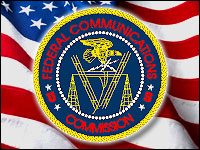
On top of all the other demographic categories that segment the United States, the FCC on Tuesday introduced some new ones that its chairman says serve as reasons for adopting a new national broadband strategy, which the agency will present to the public March 17.
“Near converts,” “digital hopefuls,” “digitally uncomfortable” and “digitally distant” all describe the various high-speed Web access non-adoption levels found in an FCC phone survey of 5,000 Americans conducted in October-November 2009. The survey’s biggest takeaway, as far as the FCC is concerned: A combination of factors — price, “a lack of digital skills” and relevancy — keep 93 million U.S. residents from climbing aboard the high-speed Web train.
The FCC used the survey results to announce that it will take the wraps off its National Broadband Plan next month, in the hope of the closing the digital divide, connecting more rural areas to the Internet, spurring job creation and economic investment, and boosting public services areas like education, healthcare and emergency services.
“We need to tackle the challenge of connecting 93 million Americans to our broadband future,” FCC Chairman Julius Genachowski said. “In the 21st century, a digital divide is an opportunity divide. To bolster American competitiveness abroad and create the jobs of the future here at home, we need to make sure that all Americans have the skills and means to fully participate in the digital economy.”
“Digital relevancy” Holding U.S. Back
The reasons many Americans still aren’t buying into broadband are evident in the FCC’s survey categories:
- Near Converts (30 percent of non-adopters) are the closest to making the leap — they own computers and aren’t intimidated by the Web but simply can’t afford the cost. Their median age is 45.
- Digital Hopefuls (22 percent) wouldn’t mind being online but don’t own a computer, can’t afford broadband and aren’t confident in their digital skills. Nearly half of this category cite affordability as their main obstacle; most in this group make up the so-called “digital divide,” populated mostly by African-Americans and Latinos.
- Digitally Uncomfortable (20 percent) can afford computers and access, but aren’t sold yet on the idea of being online as a good thing for their lives. They wonder what relevance high-speed access brings them, so they haven’t developed the skills to navigate the Web.
- Digitally Distant (28 percent) have the most negative attitudes of all the groups towards the Internet. They see it as a threat to kids and don’t grasp its educational opportunities. Most are retired Americans with a median age of 63.
Thirty-six percent of the non-adopters — 28 million adults — said the monthly fee or installation charges were too high and they didn’t like the idea of extended service contracts. Of those who cited digital literacy or relevance, 10 percent said they were worried about adult content or identity theft and 19 percent simply thought the Internet was a “waste of time.”
Predictions for the Nat’l Broadband Plan
So what does the FCC have in mind to address issues of affordability and access in its National Broadband Plan? Healthy competition would help, but Derek Turner, research director of the nonprofit media reform group Free Press, said he’s not convinced the agency will take full steps toward that direction. “We’re not very confident that they’re going to do an adequate job on just the issue of competition,” Turner told TechNewsWorld. “We know they’re thinking about it, as they’ve slowly trickled out their thoughts on the gaps they’ve seen in the nation regarding access. But competition has really taken a back seat. They haven’t put a large emphasis on it, but they haven’t showed all their cards yet.”
Free Press is asking the FCC to release more details on another set of data collected over the past year — broadband subscribership, as presented to the FCC by the major internet service providers. This data, broken down by pricing, speed tiers and technologies used, was asked for in response to criticism from the General Accounting Office and consumer advocates regarding the true nature of competition in certain markets. However, Free Press believes that data “vastly overstates the level of competition.”
Talk that the FCC will make suggestions about unlocking licensed spectrum options regarding wireless broadband has encouraged Ryan Radia, information policy analyst with the Competitive Enterprise Institute, which advocates free markets in technology. “I am cautiously optimistic that the FCC will propose to Congress that it significantly ramp up the process of freeing up spectrum for more market-friendly uses,” Radia told TechNewsWorld.
However, Radia is also concerned the FCC will consider rules for line sharing of existing networks, especially after a recent study found that the practice was necessary for quicker broadband adoption. “That study was flawed for a number of reasons,” Radia said. “I hope the FCC focuses on genuine market competition rather than fake government competition where you have multiple companies using the same set of pipes.”
Both Turner and Radia believe the FCC will reform the Universal Service Fund, set up by the agency in 1997 as part of the Telecommunication Act to make sure the industry was contributing to the welfare of schools, libraries, hospitals and other public service institutions. The USF will probably be tweaked to reflect higher broadband priorities, the two advocates said.



















































